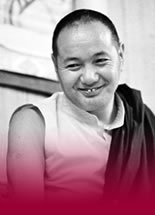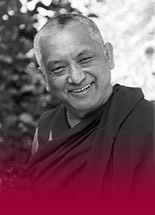Robina’s Blog
10 November, 2022
One way of framing the entire Buddhist world view is in terms of how things exist: the two truths: conventional and ultimate. Finally we need to quit the primordial ignorance deep in the bones of our being that believes that everything has an intrinsic nature, exists in and of itself, exists without depending on anything, in particular the mind that cognizes it.
And why do we need to do this? Because being out of touch with reality is why we suffer.
Everything that exists, including our own self, has both a conventional and an ultimate character. But before we get anywhere near realizing the ultimate nature of things, their absence of anything intrinsic or independent, we need to get clear about the conventional.
How can we discuss the ultimate nature of something if we first don’t even know what it is conventionally? The entire path to enlightenment as expressed in the lamrim, all the way up to the realization of special insight, is actually the process of getting things clear conventionally. There’d be a lot less suffering even if we got just that right!
Right now, having a samsaric view of the world, a samsaric philosophy, we believe our mind is physical, or that there’s a creator, or that my own past plays no role in who I am in this life, or that happiness and suffering come from the outside, and so on and so forth. We live within these views, so utterly that we don’t even realize that they’re views; we think they’re the truth.
Nevertheless, conventional and ultimate are not separate. They’re different, but not separate. And in fact, understanding dependent arising – the shorthand for how things exist conventionally – is, as Lama Yeshe paraphrases Je Tsongkhapa, “the king of logics to prove emptiness” – the shorthand for how things exist ultimately.
To discuss the ultimate nature of even a cup, first we need to establish its conventional existence. So, what is it? We must define it. One, it is that flat-bottomed container that you see there on the table; that’s the first part of the definition: its conventional nature. But that’s not enough; we need to know what is it? What does it do? What’s its function? This is crucial to understand. It holds my tea. That’s what it does, what it is, in fact — a holder of tea. But this is still not enough to be confident about the cup: we need to make sure there is no other definition of it that contradicts this. Now we can begin to investigate how it exists, finally; how it has no intrinsic nature; how there is no inherent holder of tea there.
Now, as soon as we hear this, we throw the baby out with the bathwater and assume there is no cup at all. As soon as we hear that this cup, this self, this I has no existence from its own side, is empty of existing from its own side, has no intrinsic nature, has no self-existence – all these terms are synonymous – we go, “Oh well, there’s no I, might as well die.” In other words, as Tsongkhapa puts it, we fall into the abyss of the great mistake. We fall into nihilism. We assume that emptiness denies conventional reality. This is the main misconception about emptiness.
Then when we hear dependent arising, that there is an I that does exist interdependently: dependent upon causes, dependent upon its parts, dependent upon the mind labeling it I – then we go,“Phew! There is an I after all, what a relief!” and we grasp at it.
When we hear emptiness, we think there’s nothing; and when we hear dependent arising, we think there’s something. It doesn’t make sense to us! Make up your mind, Buddha! Is there an I or isn’t there!
In fact, emptiness affirms reality. Things exist because they’re empty. And conventional reality proves emptiness. Things are empty because they’re dependent arisings.
Right now we’re like drunken sailors, careening between these two extreme views. We either think something is existing from its own side, or we think there's nothing at all.
We can see how these deep instinctive assumptions underpin us emotionally: we’re up and down like yo-yos. When attachment gets what it wants and everything is wonderful, we’re all up and excited and grasping at it as permanent: “Finally I’ve found happiness!” Then the bubble bursts and we go crashing down into despair and hopelessness: “Now there is nothing, life is worthless.”
In The Heart Sutra Buddha is telling us that the two truths go together, that you can’t possibly have one without the other. “Form is empty,” he says. “And emptiness is form. Form is nothing other than emptiness and emptiness is nothing other than form.”
Put anything there instead of form: same thing. “I am empty, emptiness is I,” etc. Spelling it out, what Buddha’s telling us is that “Wherever you find the conventional I, right there you will find the emptiness of an inherent I. And wherever you find the emptiness of an inherent I, right there you will find the conventional I.”
We’re on the right track when we begin to comprehend this, even intellectually. This is putting the two truths together, seeing them as flip sides of the same coin.

